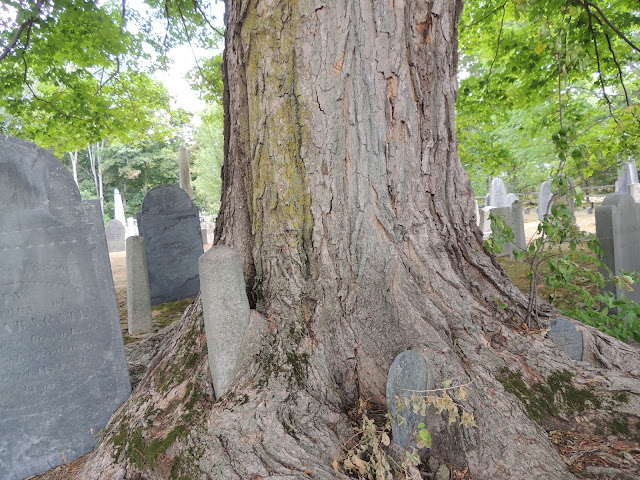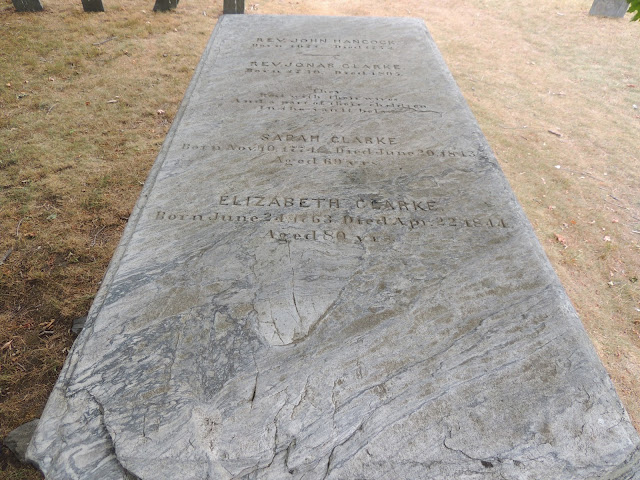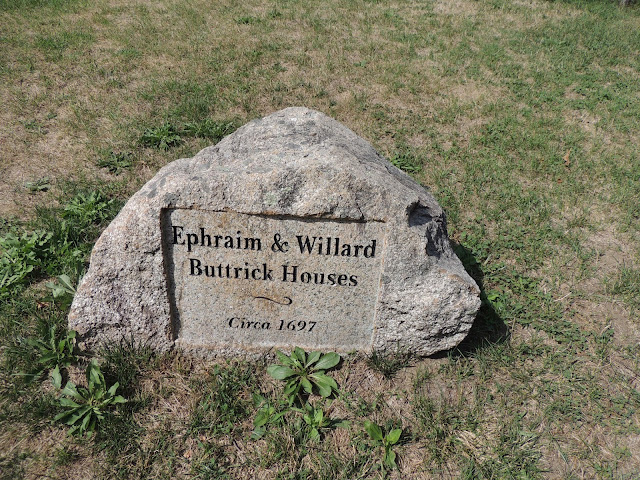We have been full timing in our RV since Memorial Day 2016, so we are approaching 3 full months of travel and over 3000 miles. I have learned a few things during that time.
1. You can't see everything. The US is a beautiful and interesting place and there's so much to see.
2. You can't sight-see every day. You want to, but it's not possible.
3. There are those mundane things that get in the way, storms, shopping, laundry, haircuts reservations, etc.
4. You have to do some planning. Sites are not open everyday and just showing up doesn't always work.
5. I get tired. I'm not as young as I wish I were and sometimes I hurt too much.
6. It's OK to take time out and rest. We have and it is refreshing.
7. No matter what you learn, there's always more.
8. Some of the stories behind the history are really interesting.
9. There's so much more, but at the moment, I am drawing a blank. Maybe that's just it, sometimes you just draw a blank.
We stayed in southern New Hampshire at a place called 3 Ponds in Brentwood, NH. This was our view at our campsite.
It was a restful place with tall pine trees and guess what, 3 ponds. The day we left here, we got new tires on the RV and that makes us feel much safer on the road.
The posts about Salem, Portsmouth and Exeter were areas we visited from this RV site.
August 7 and August 25, 2016
Lexington, MA and the Minute Man National Park
We drove to Lexington on August 7th and thought we could follow the trail to Concord and see the sites in the National Park. We found that we got hungry and there are no restaurants along the road we took to Concord. We ate in Concord, gathered information and then went back home. We returned to Concord on August 25th
In Lexington, we went to the Battle Green for a self guided walking tour. This is the site of the first skirmish in the dispute with Great Britain on April 19, 1775
The Minute Man Statue is said to be a depiction of Captain John Parker and faces the direction of the British approach.
The militias and the minutemen met at the Buckman Tavern early that day to await the British regulars.
Prince Estabrook was a slave living in Lexington, and a member of the Minutemen. He was wounded on the battle green, becoming the first black patriot to fight in the American Revolution. This plaque is to commemorate him and the thousands of other courageous black men who fought in the revolution.
This is a monument listing the names of the militia men who stood on the Lexington Green on the morning of April 19th, 1775
Called the Parker Boulder. It marks the line where the militia stood to face the British. There were 77 militia men facing 700 British. No one knows who fired the first shot, but a shot was fired and the British opened fire on the militia and they fired back. Eight colonists were killed and ten were wounded, two British were injured, before the British decided to draw back and continue on to Concord.
The Flagpole on the Battle Green is one of only eight sites required to fly the flag 24 hours a day.
The Preacher's Stand is on the site of the meeting house that was hit by a cannon ball on April 19th, 1775.
The Belfry where the alarm was sounded.
A replica of the belfry built on the it's original site.
The First Parish Church
"Ye Olde Burying Ground" is located behind the First Parish Church. Revolutionary families are buried here along with one British soldier wounded on the retreat from Concord.
This tree proves the strength of mother nature as she engulfs the grave markers.
The Reverends John Hancock and Jonah Clarke with their families.
An interesting inscription
Remember Death
"Here lies Interr'd ey Body of Mrs Anna Munro widow of Mr Robert Munro (who was Slain by the Enemy on the 19th of April, 1775) who departed this Life Aug 20th, 1775 In ey 57th year of her age."
The Minute Man National Historical Park
Since we started in Lexington on one day and then started in Concord on another day, I am going to try to combine these two days in some semblance of continuity. I reversed my photos so they will proceed from Lexington.
One of the stops is the Jacob Whittemore House, considered a witness house along the battle trail. A model of the life at the time of the war.
Paul Revere was captured at this place as he and two other men tried to ride to Concord to warn them of the British approach. Dr. Samuel Prescott escaped and made it to Concord through the woods to sound the alarm. William Dawes escaped and returned to Lexington.
The Hartwell Tavern
The "Wayside" Concord militia leader Samuel Whitney lived here with his family and two slaves.
The Orchard house. Not part of the revolution, but along the way. It is said that it may have been a station on the underground railroad.
The home of Ralph Waldo Emerson. Also not a part of the revolution.
The Robbins House. A two family cottage that housed generations of the Robbins family.
Their stories are told in the following excerpts.
Ellen, along with her mother Susan, was a civil rights activist long before it was recognized as a movement. She followed in her mother's footsteps and continued the anti slavery activism. She moved to Boston shortly after her mother died. She married John Jackson, a free black farmer, but he died within a couple years. She moved to Newport RI where she was in charge of a small private school. In the middle of the Civil War, she joined the American Missionary Association and after the war she began teaching the freed slaves. There is so much more to this woman, but not the time in this blog.
The North Bridge and "The Shot heard round the World"
The Concord Hymn
By the rude bridge that
Arched the flood,
Their flag to April's
Breeze unfurled,
Here once the embattled
Farmers stood
And fired the shot heard
round the world.
Ralph Waldo Emerson
The Minute Man Statue. The farmer leaving his plow to take up arms.
The North Bridge
The grave of the British soldiers
The Freedom Monument.
The Old Manse
These posts were along the path. I don't know the context.
The North Bridge Visitor's center
A mansion was built over looking the bridge in 1911 by Stedman Buttrick, a great great grandson of Major John Buttrick who led the colonial forces to the bridge when they were fired upon by the British.[9] In 1962 the National Park Service bought the mansion, its once extensive flower garden and surrounding land from the Buttrick family. It uses the building for a visitor center and administrative offices. Although the gardens created and cared for by Stedman Buttrick and his son Stedman have suffered since their purchase by the Park Service they were once grand enough to have been featured in a 15-page article in the May 1959 issue of National Geographic magazine. (taken from wikipedia)
The following photos are views from the visitor's center grounds.
The American Revolution lasted 8 years, 1775-1783. From listening to the rangers at the park, I learned that the colonists probably didn't win this war with their military might, but with their determination. The colonists knew why they were fighting and were ready to put their lives on the line for freedom. The British soldiers were young and far from home, so they may not have felt that they were defending their homeland. They may not have really known why they were fighting and dying.


















































































































No comments:
Post a Comment